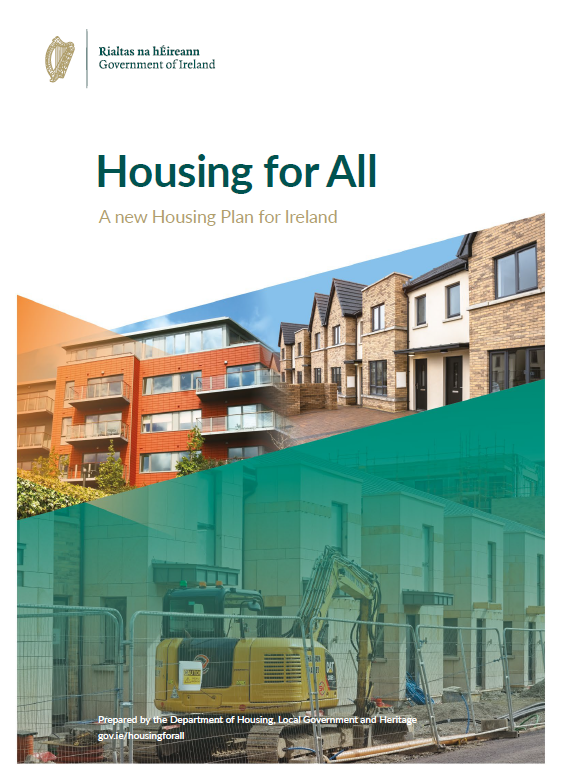At the very heart of the present Government’s problems lies a radical collapse in the capacity of our organs of state to translate plans and policies into action on the ground.
I was reminded of this recently when Darragh O’Brien proudly informed the Seanad that house completions last year were at their highest since 1975.
What he was really saying was that a much poorer country with a population of 3.1 million and which has just joined the EEC was able to build more houses in 1975 than a far wealthier country with a population of 5.1 million could build in 2022. And that was in the context of a decade-long acceptance that we are now in the middle of a housing crisis.
Which is not to say that everything was perfect with housing policy in the 1970s. There were social problems associated with huge public housing schemes, including social stratification and under-provision of social infrastructure. But local authorities were commissioning commercial builders to provide social housing and private developers were building very large estates of social and private housing.
Every local authority is also a housing authority and, in that capacity, is legally obliged under the Housing Acts to regularly assess the housing needs in its functional area and to adopt and implement a strategy for its delivery in terms of social, affordable, and private housing. That statutory duty is accompanied by a major range of planning powers, including the use of compulsory purchase, to ensure that its strategy is implemented.
But those legal powers and duties are largely fictional. Local authorities have largely given up their direct role in housing provision.
The powers that be in the Custom House have not merely encouraged local authorities in abdicating their legal and historical roles; the Custom House actually impedes and prevents housing authorities in delivering badly needed housing supply.
By a series of controls, the Custom House imposes national and regional planning strategies (frequently based on out-of-date census data) and rigidly controls re-zoning of land for housing right across the country. It actually intervenes to prevent re-zoning by elected councillors.
The Office of the Planning Regulator minutely polices the decisions of elected councillors in relation to housing provision. And so we have the phenomenon of DunLaoghaire-Rathdown Council being required to de-zone development land. Towns like Clane and Sallins in Kildare are rigidly controlled as to the order and sequencing of new housing development.
The use of compulsory purchase for housing need is very rare. Land which is the subject of compulsory purchase attracts capital gains tax on the moneys paid to its owners. With a rate of 33%, the cost to the public purse of using compulsory purchase is significantly reduced.
But there is also a very strong case for viewing the compensation paid as excluding, in whole or in part, betterment in value arising from potential connection to water, sewage, energy and traffic networks. Just compensation soes not necessarily imply a presumption that the social costs of infrastructure must inure to the property owner of undeveloped land.
As the Kenny Report of 1973 strongly indicates, the property provisions of the Constitution are not an impediment to active state and local involvement in land acquisition to ensure housing provision at affordable prices.
There is no need to amend our constitution to deliver our housing needs or to perform home-building on the same scale as was done back in 1975. The constitution is not the problem. Absence of political will combined with institutional incapacity to implement that will is the problem.
Nor is it simply a matter of green-field or brown-field development in major commuter-belt areas. City centre housing can be provided by changing our design regulations. Under-used urban land should be purchased compulsorily and then leased out for re-development just as the Wide Streets Commission or as the great Dublin estates did in the 18th and 19th centuries.
If you look at any old Ordnance Survey map you will see that homes were scattered across rural Ireland to a much greater degree than today. Are we right to prevent home-building in rural areas to the extent that we do today? Many people simply do not want to be herded into 15-minute cities, towns and villages in the name of environmental sustainability under green policies.
Rural communities are atrophying because building there is so difficult. With broadband and much-improved septic tank technology, one-off rural housing makes sense for many people and is increasingly economical and sustainable.
Extra funding for derelict house refurbishment will achieve nothing if desk-bound local authority officials with little or no implementation resources are relied on. Who will go out to survey the property and decide on value for money?
One way or another, the voting public has become weary and cynical at the housing policy debacle. Pop-up policies and whack-a-mole solutions will not do.

